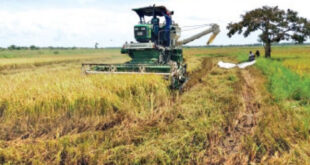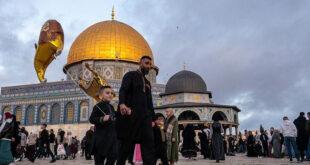Sri Lanka’s Muslims are heirs to a rich culinary tradition which has its ultimate origins in Arabia, India and the Malay world. Their cuisine is in a sense ‘international’. Here’s a brief survey of some of their more prominent foods and drinks and their origins.

Buriyani – A favourite rice dish which figures prominently in local Muslim feasts is the buriyani, a rich and delectable dish made with fragrant basmati rice cooked in ghee with meat (usually beef or chicken) and potatoes, spiced with various condiments, scented with rose water and coloured yellow. It may also be embellished with green peas, cashew nuts and raisins.Buriyani has its origins in Moghul India. The very term itself is of Indian origin and has derived from the Hindustani biryani. Abul Fazl in his 16th century treatise on Moghul India, Ain-I-Akbari gives biryan as a meat dish made from sheep with ghi and spices such as saffron, pepper and cuminseed. He also mentions a rice dish known as duzdbiryan made of rice, meat and ghi. The term biryan from which biryani evidently derives is a Persian loan in Hindustani meaning ‘fried, roasted, broiled, parched, grilled’.The earliest reference to its use in Sri Lanka is perhaps an advertisement placed by Kamal Pasha Hotel of Maradana in 1923 in Crescent magazine of Zahira College where we read of ‘buriyani rice’ and ‘fried fowls’ being offered by the hotel, suggesting that the dish would have been introduced from India for commercial purposes and that it was only later that it gained currency as a domestic dish. Elsie Cook (A Geography of Ceylon.1931) noticed the dish figuring among local Muslims a few years later. She says “Their mode of cooking rice, with sultanas and fat, making a dish called burriana, has become characteristic in Ceylon”.
Kunafa – Kunafa is a savoury cake comprising of several layers of shredded pancakes interspersed with minced beef filling. The dish is of Arab origin, though surprisingly it seems to have originally been a sweet rather than savoury dish. In the story of Ma’aruf the Cobbler occurring in the Thousand and One Nights we find kunafah figuring as a sweet dish made of vermicelli cake, fried with clarified butter and sweetened with treacle or bees’ honey. Edward Lane says in his Modern Egyptians (1836) has this to say: “A favourite sweet dish is koona’feh, which is made of wheat-flour, and resembles vermicelli, but is finer; it is boiled, and sweetened with sugar or honey”.

Samosa – Samosa is a triangular pastry filled with minced beef. It is also known among the Muslims of North India by the same name. This item may however have an Arab or Persian origin. In some Arab countries sanbusak refers to a small meat pie of a half-moon or triangular shape. Arab cookery books of the 11th-13th centuries refer to it as sanbusak or sanbusaj, terms that have their origins in the Persian sanbosag. Although probably Persian in origin, it seems to have been known among the Arabs for a considerable time. For instance, we have Ishaq Ibn Ibrahim Al-Mausili of the 9th century referring to sanbusaj while Giambonino da Cramona (13th century) in his collection of Arab recipes taken from an Arabic treatise on gastronomy by Ibn Butlan of Baghdad (11th century) describes sambusaj as a triangular pasta container filled with ground meat.

Vattalappam – Vaṭṭalappam is a favourite dessert comprising of a rich pudding made with eggs, coconut milk, jaggery and cardamoms, This brown pudding is prepared by adding a mixture of heated jaggery, coconut milk and ground cardamoms to a stock of beaten eggs after which the whole is poured into bowls and steamed till it assumes a firm consistency. The term is evidently a corruption of the Tamil vaṭṭil ‘cup’ + appam ‘cake’, hence vaṭṭilappam ‘cup-cake’. The dish is however unknown to the Tamils. Rather it is in all likelihood a borrowing from the Malay world, having derived from that sweet dish known as serikaya among the Malays of Indonesia and Malaysia. Serikaya is a steamed custard made of eggs, coconut milk, palm sugar and pandan or screwpine leaves, though it is also often consumed as a jam. The similarity between the two however suggests a common origin so that we may have to suppose vattalappam to have originated from this Malay dessert.
Firni – Firni is a semolina, vermicelli, milk or custard pudding embellished with cashewnuts and raisins. This pudding probably has its origins in the Hindustani firni, a sweet dish made of milk, sugar and ground rice. It is quite possible however that the dish has its ultimate origins in the farni of some Arabian Gulf countries and the islands off Africa. In the Gulf region, farni comprises of an eggless rice pudding prepared with milk, sugar, powdered rice, cardamom powder, saffron and rose water and garnished with nuts or dried fruit. It also seems to have been known in Zanzibar for Harold Igrams (Arabia and the Isles.1942) refers to a plate of farne which he describes as a kind of ground rice with special flavouring and sweet.
Jalabi – Jalabi is a golden-coloured, spiral, tubular sweetmeat made of a batter of wheat or rice flour, gram flour and curd fried in oil and soaked in a thick sugar syrup while still hot whereupon it absorbs the sugar which forms a sweet liquid inside while crystallizing on the surface. Although a well known Hindustani sweetmeat, jalabi probably has its origins in the zalābiya of the Arabs among whom it has been known for centuries. For instance in the Tale of Dalilah the Crafty and her daughter Zaynab occurring in the Thousand and One Nights we come across a reference to these honey-fritters (zalābiya bi asal) being consumed in Baghdad.

Maskat – Maskat is an oily sweetmeat made of wheat flour,ghee, sugar and cashewnuts and coloured green, red or yellow. It is often cut into square or rectangular pieces and is usually characterized by a soft crust that forms on the sides of its outer surface. Maskat appears to be of Arab origin and may have taken its name from the capital of Oman, Muscat which has been renowned for this sweetmeat. Robert Binning (A Journal of Two years travel in Persia, Ceylon etc.1857) says that in Muscat is made a kind of sweetmeat composed of the starch of wheat, fine sugar, rasped almonds and clarified butter. He adds that this sweetmeat is made in large quantities and exported to different parts of India and Persia where it is greatly esteemed.Muscats in colourful variety
Faluda – Faluda is a refreshing drink made of milk and rose syrup and often embellished with black basil seeds. The beverage is very likely of Arabian, Persian or Indian origin, though it seems to have its origins in an ancient Persian sweetmeat. In Arabic falud or faludaj means ‘a sweetmeat of flour, water and honey’ and is said to have been introduced to the Arabs by a traveller named Abdullah Ibn Jud‘an who had been at the Sassanid court before the triumph of Islam in Persia. It probably derived from the Pahlavi or Middle Persian paludag which meant ‘starch jelly’, ‘flummery’. In Persian paluda eventually came to mean ‘a kind of sweet beverage made of water, flour and honey’ while its Arabic inspired usage faludaj which was itself of Persian origin seems to have been applied to a concoction of ground almonds, sugar and rose water. In India faluda came to refer to a popular drink made of rose flavoured milk and vermicelli strands.

Saruvat – Saruvat is a sherbet made with rose syrup though it may also refer to a fruit juice made of the juice of citrus fruits such as lime or orange embellished with pieces of pineapple and black basil seeds. This drink is of Arab origin, derived as it is from the Arabic sharbat meaning a drink or beverage. In the Thousand and One Nights we come across references to rose sherbet as in the tale of King Umar Al-Numan, sugared sherbet scented with rose-water as in the tale of Khalifah and sherbet flavoured with rose- water, scented with musk and cooled with snow as in the tale of Nur Al-Din Ali and his son. Edward Lane in his Modern Egyptians (1837) tells us that the Egyptians have various kinds of sherbets, the most common kind being called simply shurbat or shurbat sookhar which is merely sugar and water. Nevertheless, sherbets made of the essence of roses seem to have been much favoured. For instance, we have Charles Addison (Damascus and Palmyra. A Journey to the East.1838) referring to sherbet of roses, a pink sherbet kept in tins and sold in round cups with a lump of snow in it. This article is largely based on the book Sarandib. An Ethnological Study of the Muslims of Sri Lanka by Asiff Hussein. Sarandib, now in its third expanded. Written in a lucid style, it is the culmination of much research, inquiry and field studies on the society and culture of Sri Lanka’s Muslims. The work contains detailed information on aspects like ethnic origins, language, settlements, customs and traditions, dress and ornamentation, culinary fare, medical remedies, names and titles, occupations, social organization, ceremonial observances and religious and folk beliefs.
Post Disclaimer | Support Us
Support Us
The sailanmuslim.com web site entirely supported by individual donors and well wishers. If you regularly visit this site and wish to show your appreciation, or if you wish to see further development of sailanmuslim.com, please donate us
IMPORTANT : All content hosted on sailanmuslim.com is solely for non-commercial purposes and with the permission of original copyright holders. Any other use of the hosted content, such as for financial gain, requires express approval from the copyright owners.
 Sri lanka Muslims Web Portal Sri Lanka Muslims News Center
Sri lanka Muslims Web Portal Sri Lanka Muslims News Center
 Donate
Donate


